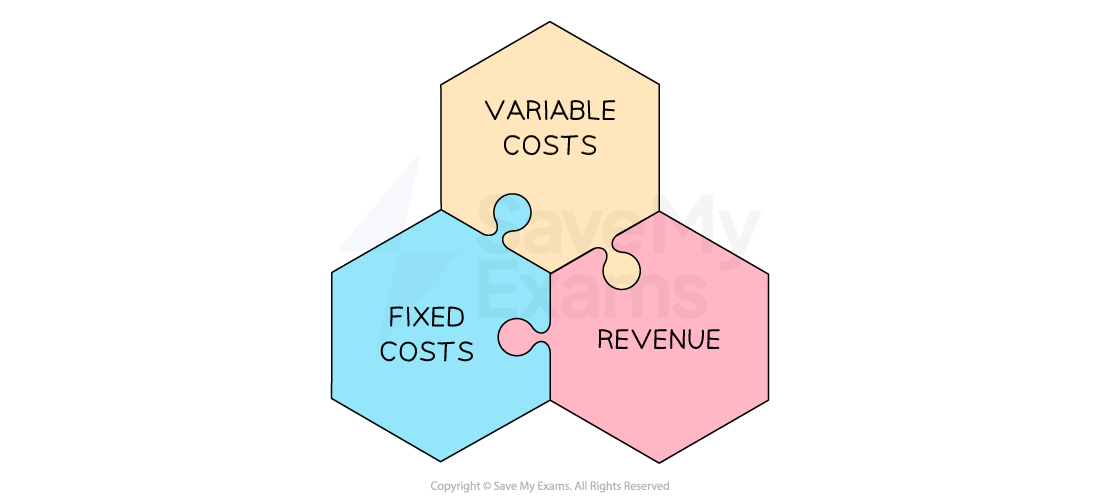The Concept of Break-even (Edexcel IGCSE Business): Revision Note
Exam code: 4BS1
The break-even point
The break even point is the number of units a business must sell to reach the point where revenue is equal to total costs
At the break even point neither a loss nor a profit is made
It helps businesses understand the minimum level of sales or output they need to achieve in order to cover all costs
This helps business managers to make informed decisions about pricing and production volumes
The elements of break-even analysis

Fixed costs are costs that do not change regardless of the level of production or sales
E.g. rent, salaries and insurance
Variable costs are costs that vary with the level of production or sales
E.g. raw materials, direct labour costs, packaging and shipping costs
Revenue is the money earned from selling products/service and is calculated using the formula
In order to calculate the break even point the contribution per unit is needed
Contribution is the difference between the selling price per unit and the variable costs per unit
It is calculated using the formula
Examiner Tips and Tricks
In some cases you may need to work out what the selling price is in order to calculate contribution
The selling price per unit is calculated using the formula

You've read 0 of your 5 free revision notes this week
Unlock more, it's free!
Did this page help you?